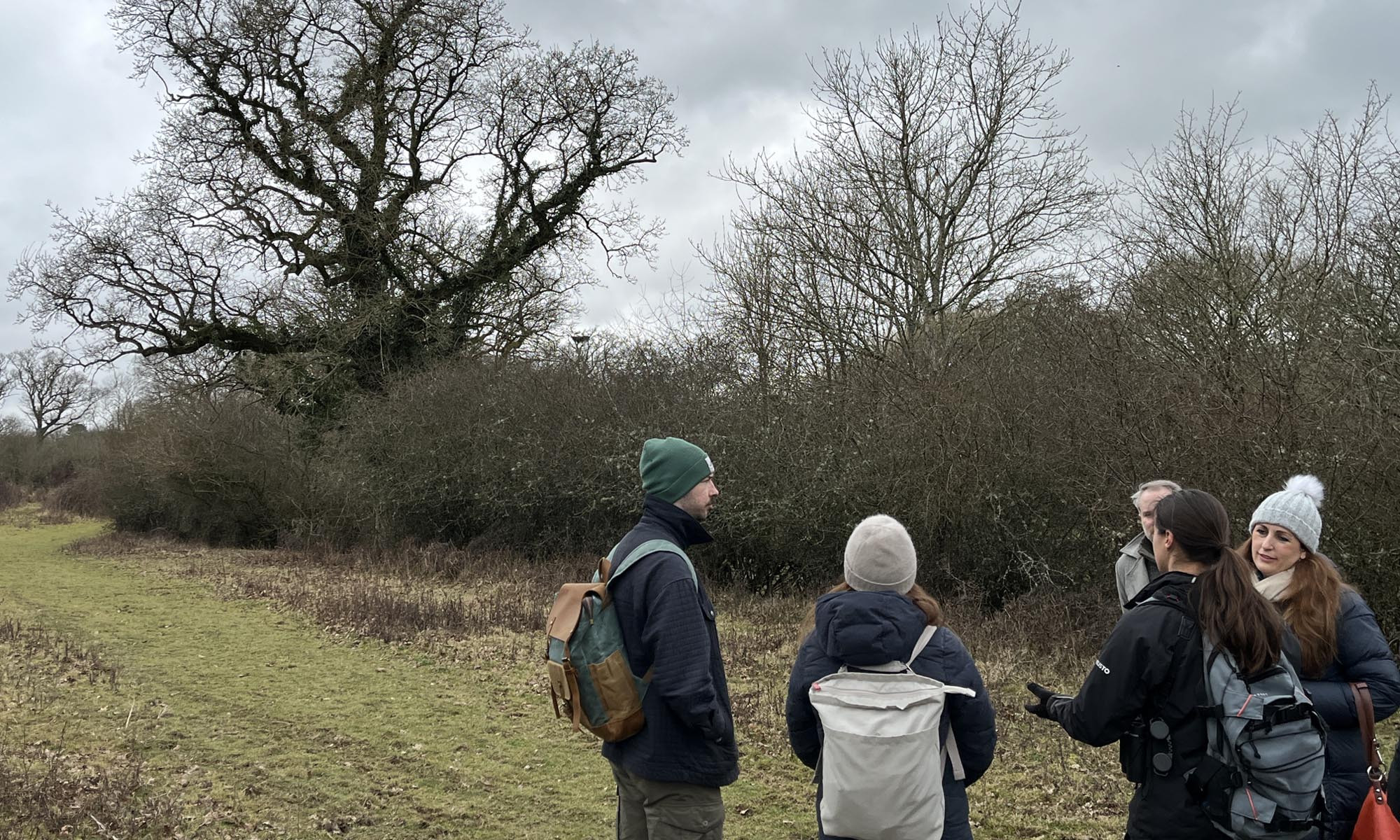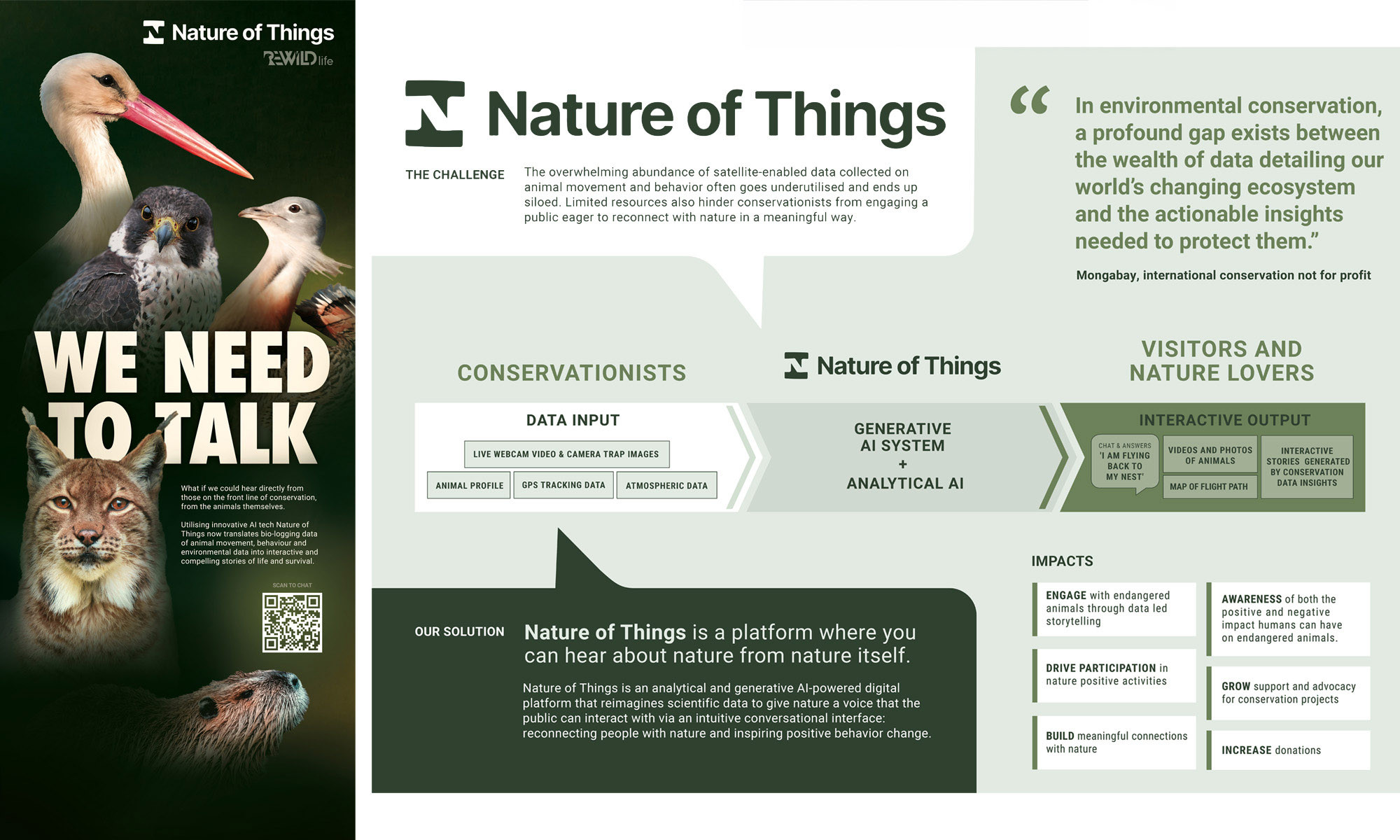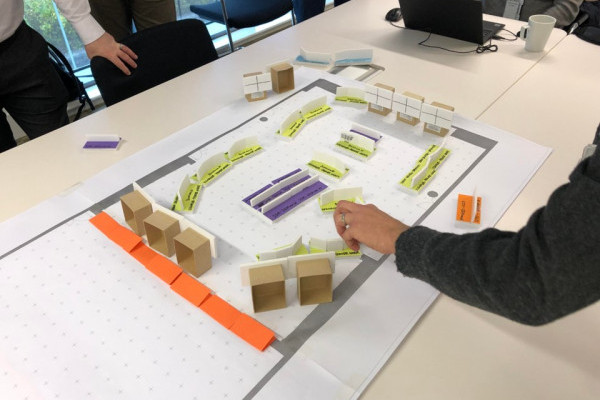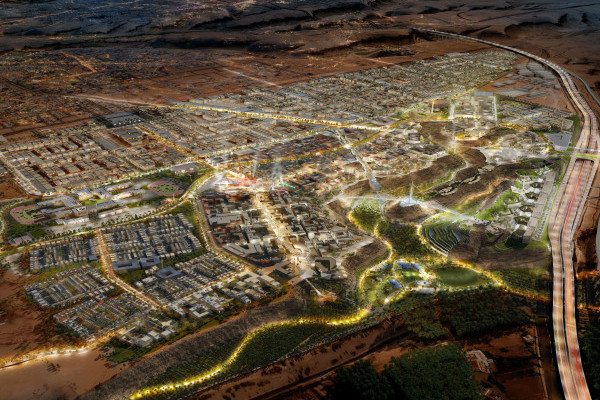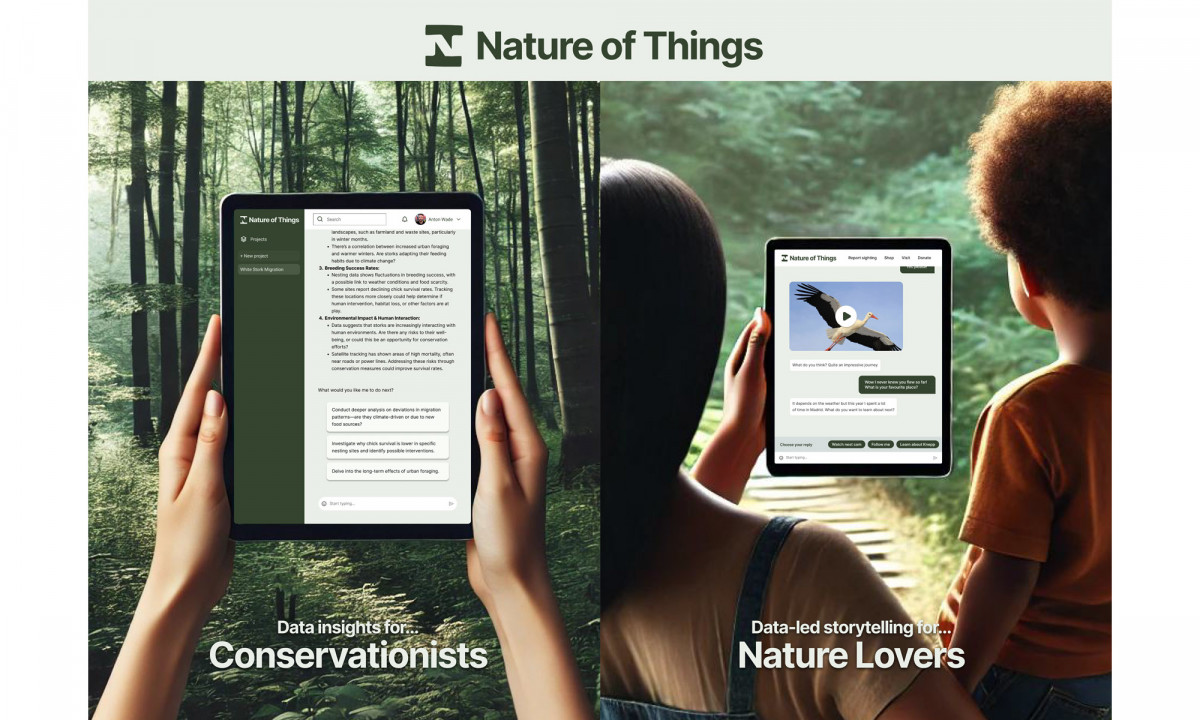
Leveraging design to grow the UK's technology & innovation sector
Satellite Applications Catapult, REWILDlife
REWILDlife specialises in AI-powered platforms allowing people to speak directly to nature, uncovering stories from species and rivers to elicit environmental recovery across the UK. REWILDlife’s main projects are inspired by the concept of ‘Rights of Nature’ and the potential of generative AI to give nature a voice.
The Design to Deliver programme, funded by Innovate UK, represents a strategic collaboration between three national innovation centres: Connected Places Catapult, Digital Catapult, and Satellite Applications Catapult. This initiative was established to accelerate nature regeneration innovation by supporting 12 small to medium-sized enterprises (SMEs) in developing and deploying solutions with demonstrable environmental impact. Within this framework, the Satellite Applications Catapult led a specialised challenge focused on leveraging space-enabled data for nature restoration. Four selected SMEs, including REWILDlife, received the opportunity to validate their solutions in a real-world environment at Sussex Bay, a designated coastal innovation zone serving as the location partner for this challenge track. Each participating company benefited from comprehensive support, including specialised design expertise and technical guidance tailored to their specific innovation needs.
REWILDlife's Nature of Things platform helps unlock valuable satellite data on animal movement that is often underutilised or stays hidden in separate systems. Simultaneously, conservationists with limited resources struggle to engage a public increasingly eager to reconnect meaningfully with nature. This innovative AI solution serves both audiences through a single integrated system. For researchers, it provides tools to upload, visualise and organise species data from satellite tracking. For visitors and nature enthusiasts, it creates interactive experiences through species-specific chatbots that share stories about migration journeys, feeding patterns, and nesting behaviours, all enhanced with flight path visualisations and live camera feeds. By bridging these previously disconnected worlds, the platform transforms technical data into compelling narratives that drive conservation awareness and action.
The Challenge
Mima partnered with REWILDlife across an intensive 12-week programme to transform their innovative concept into a viable proof of concept. As their design guides, we structured a comprehensive plan for design sprints, introducing various methodologies and approaches whilst leveraging our expertise in research and user experience (UX) design to help prototype and test different ideas. Our primary challenge involved helping REWILDlife clarify how their service could achieve positive behavioural changes towards nature conservation. Through facilitated workshops and collaborative sessions, we explored their vision for impact and translated this into tangible design objectives.
We conducted thorough stakeholder analysis to identify REWILDlife's potential users and buyers, and developed user journeys to guide product development. This included mapping the ecosystem of conservation organisations, educational institutions, visitor attractions, and individual nature enthusiasts who might engage with the platform. Throughout the sprints, we gathered systematic feedback on design concepts through iterative testing and refinement. This evidence-based approach allowed us to validate assumptions and optimise the user experience before significant development resources were committed. The project culminated in a final showcase where RewildLIFE pitched their designs to potential buyers and investors in Brighton.
The Solution
Working collaboratively with REWILDlife, we developed a low-code functional prototype demonstrating their innovative concept. The prototype illustrates how visitors to nature attractions, such as zoos, nature reserves, or rewilding spaces, can locate animals on an interactive map and initiate meaningful conversations with them through AI technology. Drawing on satellite location data, the service reveals the compelling stories of animals' journeys and behaviours.
Our development process began with comprehensive desk research, competitor analysis, and value proposition refinement. We conducted stakeholder mapping exercises and gathered User Interface/ User Experience (UX/UI) inspiration to establish a solid framework for the "Nature of Things" platform. Throughout development, we worked with conservation partners who provided real world context and valuable feedback.
Through iterative prototyping, we visualised and storyboarded both interfaces, i.e. the data input dashboard for conservationists and the engaging AI chatbot interface for the public. In our pilot work, we showcased how the platform could reveal fascinating details about migratory birds, including their travel patterns, stopover locations, and social interactions with other species.
Our Impact
A significant breakthrough came when our research identified "extending the visit" as a core value proposition. For conservation projects and attractions, the service creates lasting connections beyond physical visits, offering more interactive engagement than traditional "adopt an animal" programmes. This sustained interaction drives visibility and ongoing participation in conservation activities. Our future-focused product roadmap outlined how the platform would evolve to add value not only through visitor engagement but also by simplifying conservation insight gathering, using the same technologies to identify behavioural patterns that inform conservation efforts.
Interested in hearing more about our work with Satellite Application Catapults? See how we supported Map Impact to design user-centred prototypes leveraging their BiodiversityView and Climate Risk suite products here.
